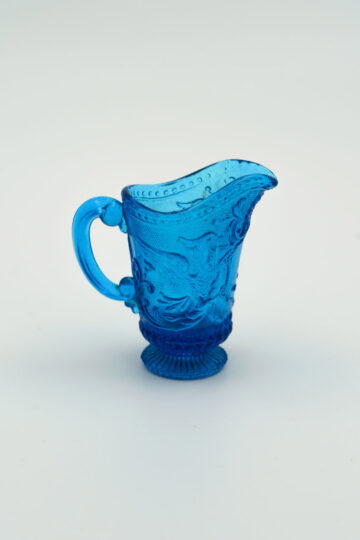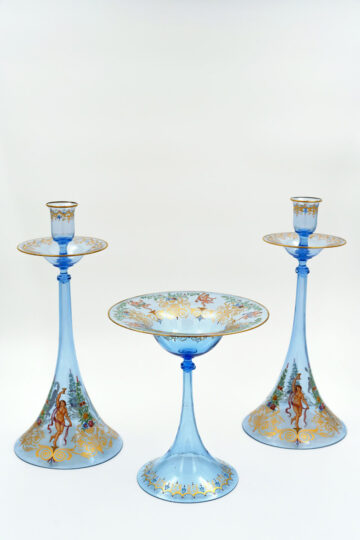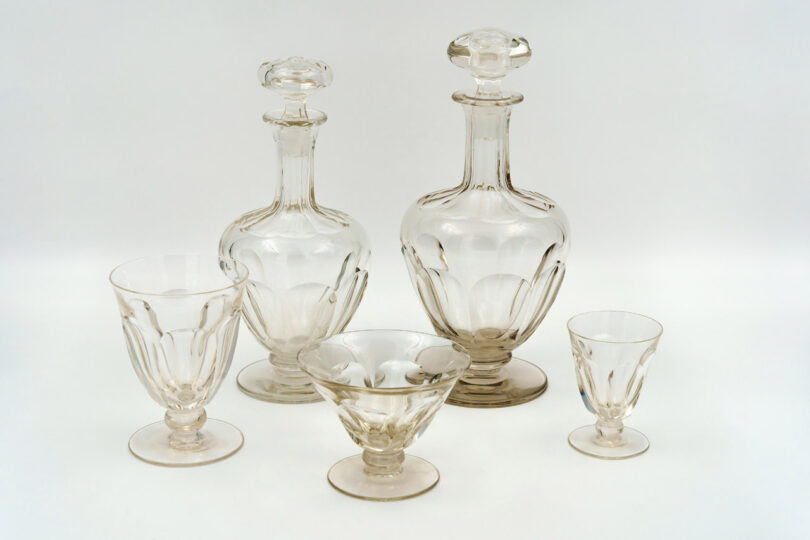ON THE GLASS ROAD: GLASS ART AND REPRESENTATION IN SERBIA (1850-1950)
Exhibition curator: Biljana Crvenković, senior curator at the Museum of Applied Art
Organizer: The Museum of Applied Art, Belgrade
On the occasion of the Museum of Applied Art Day and the International Year of Glass, declared and supported by the United Nations, on 8 November 2022 at 7 p.m., the Museum of Applied Art will officially open the exhibition On the Glass Road: Art of Glass and Representation in Serbia 1850-1950 by Biljana Crvenković, the Museum’s senior curator.
This representative exhibition covers a period of one century through which the establishment of the industrialization of glass and the role of shaped glass as an important part of the modernization processes of Serbian society are traced. Using a modern approach in presenting the content and in an effort to bring the fragility of the material closer to the visitors, as well as a significant part of our heritage, the emphasis of the installation is on the challenges that further draw the visitor into the history of national glass production, following its imaginary glass path. The role of shaped glass is traced through various cultural models through which the national, state and personal aspirations of individuals can be perused.
The exhibition consists of 130 exhibits and accompanying materials from the Museum of Applied Art, the Museum of Naïve and Marginal Art in Jagodina, the Paraćin Native Museum, the Kikinda National Museum, the Ethnographic Museum and other institutions that illustrate the production of the most important factories of the 19th and first half of the 20th centuries from the territory of Serbia. For the first time in this format, the most significant objects that reflect everyday civic culture, marking the status and identity of individuals and wider cultural circles of our area from the mid-19th century to the mid-20th century, will be presented to the public.
One of the primary goals of the exhibition is to offer in one place all the most significant preserved glass collections in Serbia, namely: the dynastic and state-owned sets from the funds of the Museum of Yugoslavia, the Museum of the City of Belgrade, the Historical Museum of Serbia, the Smederevo Museum and the Endowment of King Peter I in Oplenac. The curiosities of the exhibition are objects from representative buildings of Serbia: the ‘Zlatni breg’ Villa in Smederevo and the Dedinje Palace Complex, which will be open for the public for the first time.
The exhibition is accompanied by a representative studio catalogue.
Veljko Zejak’s authorial glass exhibition “Nucleus” is the first showing in a series with which we shall set off the accompanying program of the entire event.
The accompanying program consists of an exhibition, a lecture as well as a workshop segment. One part is dedicated to guest exhibitions of contemporary trends in the art of glass, and the other consists of lectures by foreign experts on the role of glass, which underscores international cooperation in the International Year. These programs are to be held in the Museum of Applied Art, while a specially designed workshop program will take place in the Museum of Science and Technology in Belgrade.
The accompanying program was designed with the aim of inducting the public into the issues of contemporary art and the heritage of glass, as well as the role of glassmaking in society, and an attempt to perceive the future of the development of glass art in Serbia and the region.









